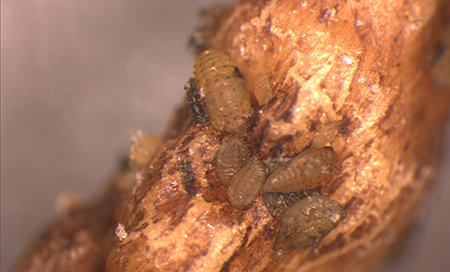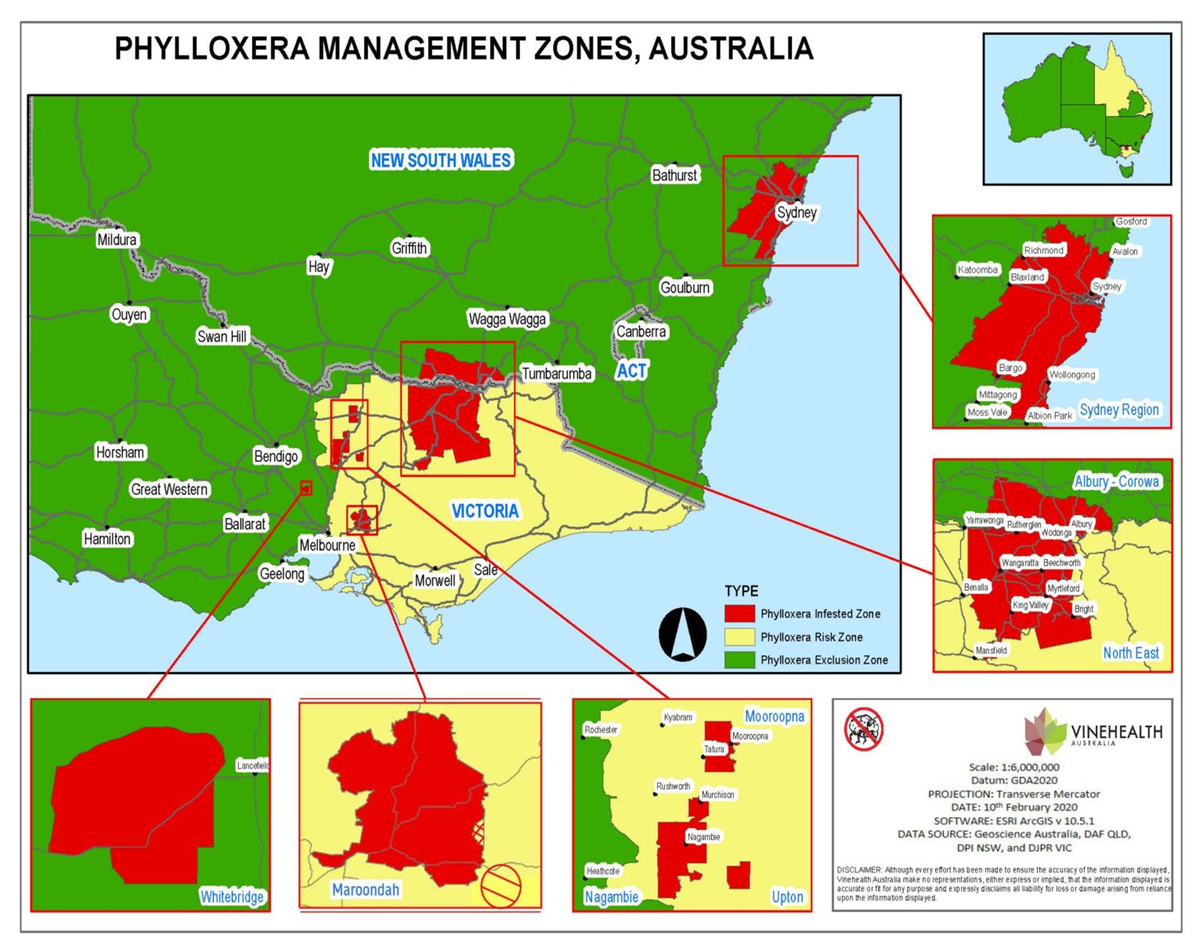PLANT PEST

Biolog. Bundesans., Inst. f. Pflanzenschutz im Weinbau , Bugwood.org
Grape phylloxera
Some strains are present in parts of Australia and are under management in Australia
Features: Phylloxera is a small yellow insect that destroys grapevines by eating and damaging the roots
Where it’s from: Asia, Africa, North America, Panama, South America, Europe, New Zealand and parts of Australia
How it spreads: Importation and movement of infested grapevines; local spread by people (clothing, footwear) or vineyard machinery
At risk: Grapevines
Keep it out
The grape phylloxera (Daktulsphaira vitifoliae) is a small yellow insect only just big enough to see by the naked eye that destroys grapevines by eating the roots.
The insects can crawl along the soil surface, in the canopy or below ground from root to root. This means that they’re easily spread—on boots, clothing, equipment, and vehicles or can be moved with soil and vine material.
Many of the grapevines grown in Australia are susceptible to the pest, which can kill a vine within six years. There is no cure for it, so if vines are infested they must be destroyed and replaced.
Stop the spread
Some strains of grape phylloxera are found in parts of Australia—in regions of Victoria and NSW. To protect Australia’s vineyards, ongoing efforts are needed to stop spreading to other regions.

Importing goods
To keep exotic grape phylloxera out of Australia, never ignore Australia’s strict biosecurity rules.
Import shipments may need to be inspected, treated and certified, so before you import, check our Biosecurity Import Conditions system (BICON).
Travellers and people moving interstate
Avoid spreading grape phylloxera by checking Interstate Quarantine rules about what you can and cannot take when you travel within Australia.
Tourists
Because grape phylloxera can get onto footwear, clothing and personal items, never venture into vines when you visit vineyards. They could hitch a ride with you from place to place.
Growers
- Abide by movement restrictions (National Phylloxera Management protocol) that apply in phylloxera infested zones.
- Use good vineyard biosecurity including:
- only purchasing planting material from accredited suppliers
- frequently monitoring your grapevines
- preventing access to your vines by people and vehicles
- inspecting and cleaning equipment.
- Everything you need to know is available from Farm Biosecurity.
What to look for
- Slow and stunted shoot growth and early yellowing of leaves in grapevines.
- Symptoms found in neighbouring vines.
- Rotting roots with knots or galls.
- Occasionally, galls appear on leaves.
Where to look
Importers
Importation of infested vines or propagating material is the most likely way that more strains of grape phylloxera could make it to Australia.
Growers in phylloxera-free areas
Investigate any vines that are yellowing and not performing well. Check the roots for any sign of grape phylloxera activity.
What to do
If you think you’ve found a vine infected with grape phylloxera outside the known infested zones:
- take a photo
- do not disturb infected plants (this may be as simple as closing the doors on a shipping container or preventing access to a vineyard).
Read the detail
- Watch how Phil the phylloxera bug can hitch a ride with vineyard visitors (Video, 1 minute)
- Vine Health fact sheet (PDF)
- Farm Biosecurity: Phylloxera
